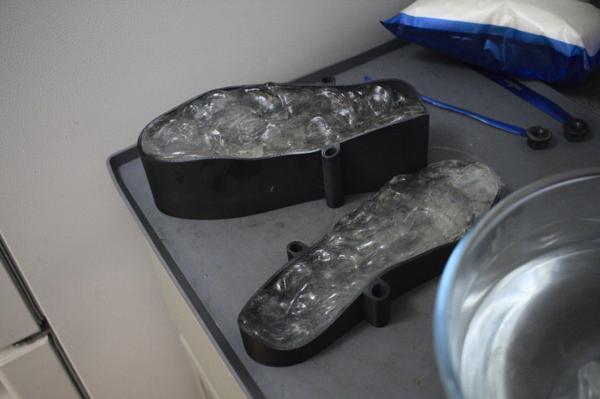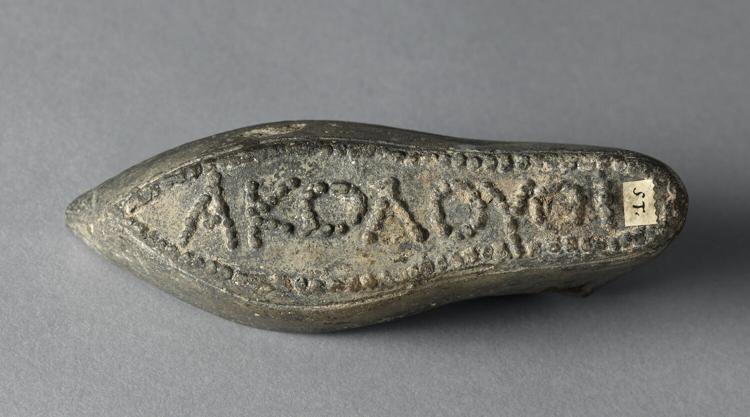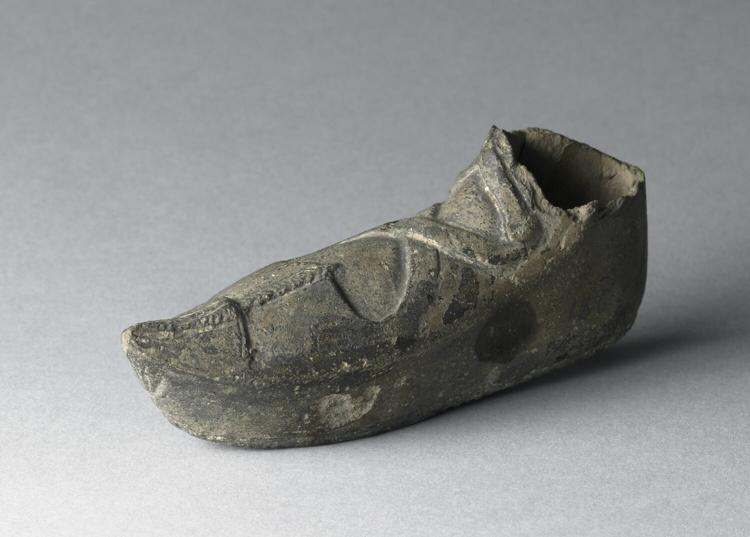projects
contact/buy












'Follow Me' Sandals
I don't recall where first I heard of the notion that Ancient Roman and/or Greek prostitutes would run about in shoes bearing messages to the effect of 'Follow me' to print in the dust underfoot. Its certainly possible, given the right surface a message can be printed quite clearly, and its no trouble to fit a small written message onto a shoe sole at the normal nail sizes and densities. But did it actually happen?
There certainly are quite a few Roman shoes discovered across the Empire, and especially shoe soles. Most of these come from the frontiers, but even there there is evidence for the presence of women and children and civilized life going on in the associated towns. The Romans, some of them at any rate, certainly were interested in drawing interesting designs with their hobnails, but when the topic of 'Follow me' shoes recently came up I realized I could not remember actually seeing any shoe bearing such text, nor any hobnailed text at all for that matter. My curiosity was piqued.
Associated with claims about the existance of these shoes is a little bit of line art, which turns out to be from the 1877 Memoires de la Societe Nationale des Antiquaires de France. In an article by M. L. Huezey we have a small description of the object, the broken remains of some sort of statue apparently found in Lower Egypt.
We also get a view of the top of the shoe, which appears to be a ramshaw style shoe with integral laces consistent with about the 3rd century, at least in the North of Europe if not Egypt. I don't recall seeing an actual shoe with a toe in quite the style here depicted, which appears to have an external stiffener.
He also associates the shoe to some comments by Clement of Alexandria, complaining about certain types of decoration on shoes. Translations seem to differ slightly but Huezey and some English translaters seem of the opinion that he notes both decorative patterns and 'love messages', and may point to text on shoes soles similar to the statue. Alas my Greek is not good enough to have an independant opinion.
Ultimately I found that the object itself is held in the Louvre, which has made available some more modern photographs that give us some good views of the shoe, and where it is dated to 200-300 AD.
So whether or not such shoes existed I do not know for certain, but it seems probable they did, at least for a time, at least in Egypt. Curiously I wonder whether the shoes would have been used to print in the dirt as so commonly assumed, or whether they were meant to, with a raised foot draw the attention of someone. If the former we have to ask why the writing on the statue is not written in a mirror fashion.
Links of interest:
Another French Publication that gets cited but appears to just be repeating Heuzey.
The item itself, in the Louvre. They have a couple additional images available as well.
A translation of Clement of Alexandria's relevant book. See chapter 12.

A photo of the item, from the Louvre.

This lineart seems commonly circulated but does not show the shoe very well.

A view of the upper also from the Louvre.